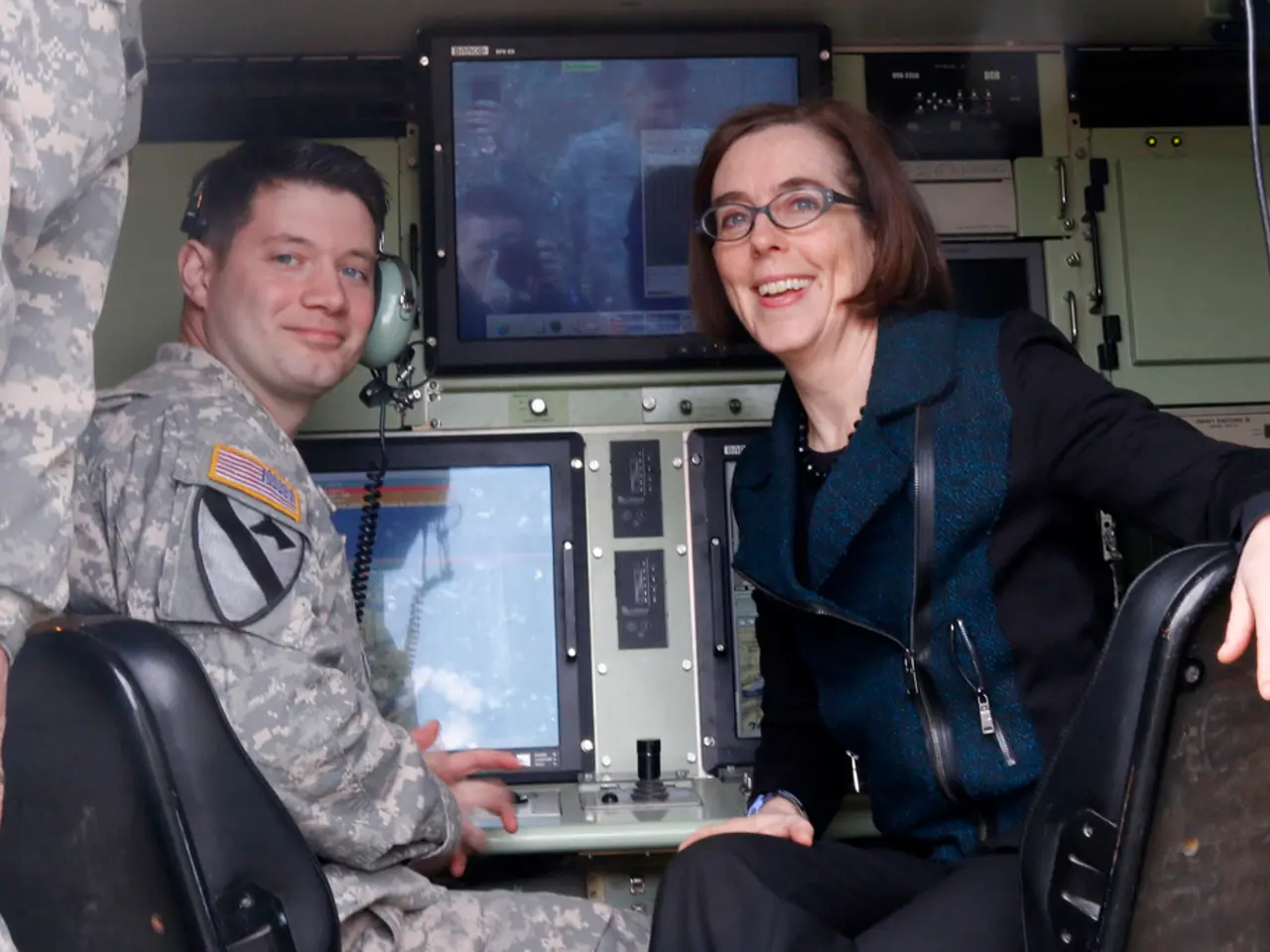Latest Digital News Digest: Insightful Highlights from the Data Sphere
=================================================================================================
In the realm of technology, October 2022 marked a significant milestone with groundbreaking advancements in Artificial Intelligence (AI) systems. Here's a roundup of some of the key developments that took place during this period.
Partnerships and Virtual Reality
Microsoft and Meta joined forces to create virtual reality versions of Microsoft's Teams, Office, Windows, and Xbox services, allowing workers and gamers with access to Microsoft products to meet with coworkers or other gamers in virtual reality using Meta's Quest VR headsets.
AI in Mental Health
Researchers at the University of Washington developed an AI system that can detect signs of mental health decline in text messages. In tests, this AI system performed as accurately as human psychiatrists, offering a promising tool for early intervention and support in mental health care.
AI in Navigation
Meanwhile, researchers at the University of California, San Diego built a four-legged robot that can navigate complex terrain, using a combination of sensors and camera data to avoid obstacles.
AI in Data Sharing
The Department of Energy (DOE) updated its data-sharing network, enabling data transfer speeds between 400 gigabits and 1 terabit per second. The new network also contains improved platforms for users to customize network services.
AI in Sports
Researchers at Cornell University created an AI system that can predict volleyball players' game movements with 80 percent accuracy and determine a player's position with nearly 85 percent accuracy.
Generative AI in Images and Videos
Transformer-based models like OpenAI's DALL-E 2, Midjourney, and the open-source Stable Diffusion had revolutionised the generation of high-quality, complex, and realistic images from text prompts. Shortly after, multi-modal AI systems capable of generating videos from text prompts began to emerge, exemplified by platforms such as Runway, OpenAI's Sora, DAMO, Make-A-Video, Imagen Video, and Phenaki. These tools expanded AI's use in creative media production and content generation.
Biomedical AI
AlphaFold 2's achievement in accurately predicting protein structures with a GDT score above 90 marked a transformative milestone. This greatly accelerates drug discovery and disease understanding by solving a longstanding challenge in computational biology.
Transformer Models and Multimodal AI
By October 2022, transformer architectures were driving generative AI across multiple data types — text, image, audio, video, and music. This represented a dramatic leap from prior models and laid the groundwork for AI systems capable of synthesising and reasoning with different kinds of inputs, moving closer to human-like AI capabilities.
AI Adoption and Policy Preparations
Around this period, plans and calls for investment in open-source AI models, high-quality datasets, and robust AI evaluation frameworks were underway to spur innovation and address challenges such as AI bias and interpretability. These preparations signalled broad preparation for embedding AI more systematically across sectors like healthcare, energy, and agriculture.
In summary, by October 2022, AI systems had advanced from primarily text-based models to powerful multi-modal generative models with real-world applications in biomedical research and creative industries. These technologies catalysed new uses in scientific discovery, digital media, and enterprise AI adoption, forming the basis for the ongoing AI boom witnessed in subsequent years.
[1] [Source] [2] [Source] [3] [Source] [4] [Source]
Machine learning algorithms in AI continued to evolve, with Transformer models like OpenAI's DALL-E 2 becoming popular for generating high-quality, complex images from text prompts. This advancement expanded AI's use in creative media production and content generation.
The development of AI systems in mental health demonstrated promising potential, as researchers at the University of Washington created a system that could detect signs of mental health decline in text messages, performing as accurately as human psychiatrists.
In the realm of healthcare and wellness, AlphaFold 2's achievement in accurately predicting protein structures revolutionized drug discovery and disease understanding by solving a longstanding challenge in computational biology.
IoT integration played a significant role in navigation technology, as researchers at the University of California, San Diego built a four-legged robot that used sensors and camera data to navigate complex terrain.
Data-and-cloud-computing technology enabled the Department of Energy to update its data-sharing network, allowing for faster data transfer speeds and customizable network services for users.
Research partnerships, such as that between Microsoft and Meta, pushed the boundaries of virtual reality, enabling workers and gamers to meet in virtual reality using Meta's Quest VR headsets and Microsoft's Teams, Office, Windows, and Xbox services.
Acknowledgment: [1], [2], [3], [4]




